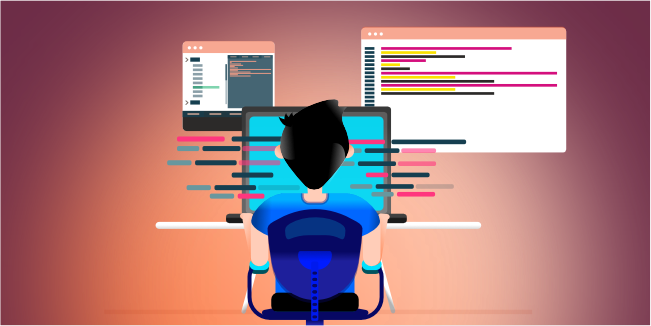developmentteam
softwaredevelopmentteam
roles
Roles in a Software Development Team

People are the factor that determines the success or failure of a product. As the best software development company, we know that creating a great product depends largely on the quality of the professionals and the way the team is set up. Projects only move forward when key team members are in the right place. Many different roles are needed in the software development life cycle. It is worth knowing them because no one is more important than the others, and each role is crucial to the project.
When roles are poorly matched, and responsibilities are unclear and poorly defined, the project will take a long time, and the output can be mediocre. Therefore, building the perfect team to get great results is essential.
10 Crucial Roles in a Software Development Team
The basis for successfully implementing a project is the ability to build an effective software development team. Some people decide to use the services of a dedicated software development team, which is ideally suited to the needs of a specific project. Regardless of whether you choose to create a team yourself or use the services of a software development company, you must be aware that software development team roles must be strictly defined so that each project participant knows what he is responsible for.
Below we have prepared a description of the 10 typical team roles in software development, which you should read.
The Project Manager deals with complete project management, oversees all stages of project implementation and manages the team and tasks. It also creates project documentation and controls the budget and deadlines for all tasks. A Project Manager is a person who works closely with all project participants, so she/he must have appropriate interpersonal skills. An ideal Project Manager must be well organized and react quickly to changes.
It is assumed that the Project Manager is a critical role in the team, as the success of the entire project may depend on his actions.
Engineering Managers are responsible for solving technical problems in the software development process. They need to have a broader perspective on a difficult situation than software developers. This means they must focus more on the structure's architecture and debt relief.
The Engineering Manager must have extensive knowledge and be open to technological innovations. It must also consider regulatory constraints, security, and project costs. Excellent analytical skills and the ability to solve problems quickly are essential. Engineering Managers work with the entire team; therefore, teamwork and human resource management skills are crucial.
The Software Architect is responsible for developing the technical and functional architecture of the entire system. He develops the essential elements of the system and closely cooperates with developers in designing and implementing new solutions. In addition, the Software Architect recommends the best solutions, considering both technical and business issues. A person in this position must have a strategic vision of the project because this skill will allow you to create a unique product.

Software Developers are responsible for writing the code and developing the software. To do this, they use a variety of programming languages, frameworks, and libraries. Depending on the experience level, Software Developers' teams may consist of junior, mid and senior developers. In addition, front-end, back-end, and full-stack developers can be distinguished depending on their skills and specialization. Front-end developers create everything that the end user sees and interacts with. They focus on the usability and functionality of the software.
On the other hand, back-end developers are responsible for the processes and functionality behind what the user sees. In turn, full-stack developers have knowledge of both front-end and back-end. Such a team structure means that each area of software development has a dedicated specialist with appropriate competencies.
All Software Developers work closely with other team members.
User Experience (UX) and User Interface (UI) are closely related but have different concepts.
It is the responsibility of the UX Designer to provide users with the best possible experience while using the application. UX Designer analyzes both user behavior and competitors' products.
The UI Designer, on the other hand, is responsible for designing the user interface. It means transferring the content, style, and graphics that connect the user to the visual side of the project.
UX/UI Designers are crucial to every software development team because they care for users' needs. These two roles overlap to a large extent, and depending on the project size, they can be fulfilled by one person.
In our article "UI vs. UX - Two Types of Design. How are they different?" we have discussed these concepts in detail.
QA Engineer controls the testing phase of the software development process to ensure it adheres to quality standards and performs appropriately. Therefore, they must be knowledgeable in various tests and have coding abilities. Conducting tests and writing a script to automate the process is what we call quality control. QA Engineers use a script written by them to automate the testing process. They conduct analyses and make a bug report describing all the actions that led to an error. A well-written report saves time for everyone involved and prevents future mistakes.

The Business Analyst is responsible for understanding and fulfilling the client's commercial needs. Analysts participate in the software project from its inception, connecting the client's desires with what is possible within the project's scope. Business Analysts are in charge of researching and gathering information about a product and identifying its target audience's needs. They analyze user behavior to figure out improvements that could be made to current or future products. They check if the product solves market problems and how competitive it is relative to similar products.
When discussing roles in a software development team, one cannot forget about Scrum Master. The Scrum Master uses the Agile methodology to lead teams by utilizing various Scrum ideas. This includes organizing daily stand-ups, collecting feedback from team members, conducting one-on-one meetings, and eliminating any obstacles that may be hindering your team's performance or progress. The scrum methodology is a process that helps teams plan and deliver sprints or short cycles of work. Scrum Masters control the backlog by assigning tasks to team members and keeping track of progress on tracker boards like Jira. At the end of each sprint, the Scrum Master and development team review what was accomplished, identify any difficulties that arose, and define objectives for the next sprint.
Digital product testing is an integral part of the software development life cycle. It allows you to find and fix the error immediately, saving you time and money. As we have emphasized many times in our articles, tests must be carried out regularly as often as possible. Many tests can be performed automatically, but nothing can replace the human factor in testing. Testers are a crucial part of the software development team structure. They are responsible for ensuring that the software meets business requirements and the product meets quality standards. Their work involves implementing appropriate test protocols and collecting data from various tests.
Tech Lead is responsible for maintaining the quality of all technical processes. It is usually an experienced developer responsible for all technical tasks, improving the team's technical skills, and solving technical problems.
Team Lead manages the time and tasks of individual people in the department. He is primarily responsible for setting current and long-term goals, as well as for verifying the progress of work.
It was no coincidence that these two roles appeared in our ranking as the last ones. It is because it only sometimes appears within the software development team structure. It is because sometimes their duties are performed by other team members: e.g., the Project Manager can also act as Team Lead - it all depends on his competencies and the type of project.
Summary
Creating the right software development team is a crucial success factor for any project, regardless of the industry and type of product. Each role in the team is essential, and all of them should be noticed. If you are still trying to figure out what the structure of your team should look like, arrange a free consultation with our specialists. We will advise you and support you with the best talents.